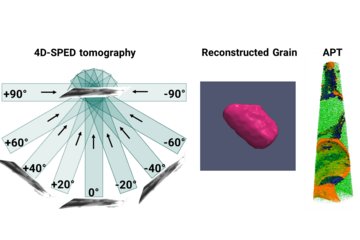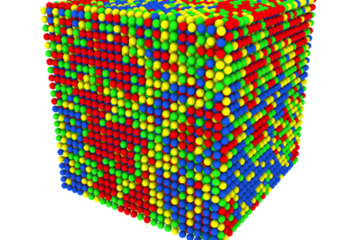All genres
1.
Journal Article
Machine learning enhanced atom probe tomography analysis. Progress in Materials Science 156, 101561 (2026)
2.
Journal Article
Towards Establishing Best Practice in the Analysis of Hydrogen and Deuterium by Atom Probe Tomography. Microscopy and Microanalysis 30 (6), pp. 1205 - 1220 (2024)
3.
Journal Article
Analyzing Linear Features in Atom Probe Tomography Datasets using Skeletonization. Microscopy and Microanalysis 30 (Supplement_1), ozae044.022 (2024)
4.
Journal Article
Revealing in-plane grain boundary composition features through machine learning from atom probe tomography data. Acta Materialia 226, 117633 (2022)
5.
Journal Article
On strong-scaling and open-source tools for analyzing atom probe tomography data. npj Computational Materials 7 (1), 21 (2021)
6.
Journal Article
Open and strong-scaling tools for atom-probe crystallography: high-throughput methods for indexing crystal structure and orientation. Journal of Applied Crystallography 54 (Pt 5), pp. 1490 - 1508 (2021)
7.
Journal Article
Community-Driven Methods for Open and Reproducible Software Tools for Analyzing Datasets from Atom Probe Microscopy. Microscopy and Microanalysis, pp. 1 - 16 (2021)
8.
Journal Article
Quantification of 3D spatial correlations between state variables and distances to the grain boundary network in full-field crystal plasticity spectral method simulations. Modelling and Simulation in Materials Science and Engineering 28, 055005 (2020)
9.
Journal Article
3D nanostructural characterisation of grain boundaries in atom probe data utilising machine learning methods. PLoS One 14 (11), e0225041 (2019)
10.
Journal Article
Coupled experimental-computational analysis of primary static recrystallization in low carbon steel. Modelling and Simulation in Materials Science and Engineering 28 (1), 014001 (2019)
11.
Journal Article
On Strong Scaling Open Source Tools for Mining Atom Probe Tomography Data. Microscopy and Microanalysis 25 (S2 ), pp. 298 - 299 (2019)
12.
Journal Article
Building a Library of Simulated Atom Probe Data for Different Crystal Structures and Tip Orientations Using TAPSim. Microscopy and Microanalysis 25 (2), pp. 320 - 330 (2019)
13.
Journal Article
Application of chord length distributions and principal component analysis for quantification and representation of diverse polycrystalline microstructures. Materials Characterization 145, pp. 671 - 685 (2018)
14.
Journal Article
Computationally Efficient Phase-field Simulation Studies Using RVE Sampling and Statistical Analysis. Computational Materials Science 147, pp. 204 - 216 (2018)
15.
Journal Article
Development of a Model for Dynamic Recrystallization Consistent with the Second Derivative Criterion. Materials 10 (11), 1259, pp. 1 - 18 (2017)
16.
Journal Article
Recrystallization behavior of a high-manganese steel: Experiments and simulations. Acta Materialia 100, pp. 155 - 168 (2015)
17.
Talk
A Machine Learning based Workflows to Quantify Atom Probe Tomography Data. Workshop "Frontiers of APT Physics, Data Processing, Analysis and Reconstruction“, Arlington, VA, USA (2024)
18.
Talk
Coupled Experimental–Computational Analysis of Primary Static Recrystallization in Low Carbon Steel. Seminar of the Department of Mechanical Science and Engineering of the University of Illinois, Urbana-Champaign, Il, USA (2019)
19.
Talk
Experimental–computational analysis of primary static recrystallizazion in DC04 steel. 9th International Conference on Multiscale Materials Modeling , Osaka, Japan (2018)
20.
Talk
Scalable Quantifying of Evolving Descriptive Spatial Statistics in Full-Field Crystal Plasticity and Atom Probe Tomography. Institut für Metallkunde und Metallphysik, RWTH Aachen University, Aachen, Germany (2018)











